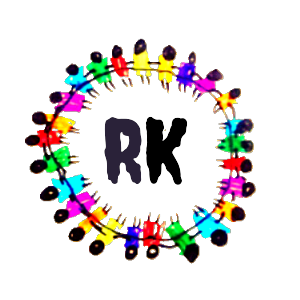Welcome to Ramakayal Computer Education, your trusted provider for Digital Signature Certificate (DSC) services.
“We offer Class 2, Class 3, DGFT, and Foreign DSC services with fast support and lowest prices.”
✅ Trusted | 💼 Professional | 🕒 On-Time Service
✅ Why Choose Us?
- Licensed DSC Provider
- Affordable & Transparent Pricing
- Aadhaar OTP / Biometric / PAN-Based Options
- Token Shipping & Download Support
- Bilingual Support (English & Tamil)
- Services for Individuals, Businesses, and Institutions
📞 Contact Details
📱 Phone / WhatsApp:
86676 93527 & 04632 242412 (9.00 AM to 8.00 PM)
🌐 Website: www.ramakayalcomputereducation.com
📺 YouTube: youtube.com/goldensaravana
🧾 Service By: C. Saravanakumar, Kalugumalai
🙏 Please Share
If you know anyone in need of a DSC, kindly share this page with them. Your referral is appreciated!
❓ Frequently Asked Questions (FAQ)
🔹 What is DSC (Digital Signature Certificate)?
A Digital Signature Certificate (DSC) is a secure digital key issued by certifying authorities to validate and authenticate the identity of an individual or organization. It is used for signing electronic documents, filing GST, Income Tax returns, MCA, DGFT, tenders, and more.
🔍 Explanation of Each Digital Signature Certificate (DSC) Type
🔸 Class 2 – Document Signer
Purpose: For automated signing of large volumes of documents by organizations (like invoices, bills, salary slips, etc.).
- ✅ Issued in the name of an organization.
- ✅ Used in software systems like Tally, SAP, or ERPs.
- ⚠️ Requires company documents & authorization letter.
- Not for individual use.
⏳ Validity options:
• 1 Year – ₹7500
• 2 Years – ₹8000
• 3 Years – ₹12000
GST extra
🔸 Class 3 – Individual Use
Purpose: Most commonly used for filing GST, ITR, MCA, e-Tendering, Trademark filing, etc.
- ✅ For professionals, business owners, and individuals.
- ✅ Aadhaar eKYC / PAN-based issuance supported.
- ✅ Accepted by government and private portals.
⏳ Validity options:
• 1 Year – ₹1350
• 2 Years – ₹1500
• 3 Years – ₹2250
GST extra
🔸 Class 3 – Document Signer
Purpose: High-security signing by organizations for critical digital documents and automation.
- ✅ Meant for enterprise-level signing.
- ✅ Not for individuals.
- ⚠️ Requires organization KYC and usage declaration.
⏳ Validity options:
• 1 Year – ₹11250
• 2 Years – ₹12000
• 3 Years – ₹18000
GST extra
🔸 Class 3 Combo (Signing + Encryption)
Purpose: Used where both signing and data encryption are required — like eTendering, eAuction, and eProcurement platforms.
- ✅ Highly secure: includes two key pairs.
- ✅ Required by some departments like MSTC, ONGC, Coal India.
⏳ Validity options:
• 1 Year – ₹2000
• 2 Years – ₹2250
• 3 Years – ₹3350
GST extra
🔸 DGFT (Director General of Foreign Trade) DSC
Purpose: Used by Importers & Exporters to access DGFT portal services.
- ✅ Mandatory for EXIM businesses.
- ✅ Issued in the name of the business owner or company.
⏳ Validity options:
• 1 Year – ₹1800
• 2 Years – ₹2000
GST extra
🔸 Foreign Class 3 DSC
Purpose: Digital signature for Indian citizens or organizations residing or operating abroad.
- ✅ Documents like Passport, Foreign Address proof required.
- ✅ Mostly used for regulatory compliance, tenders, business processes.
⏳ Validity options:
• 1 Year – ₹9000
• 2 Years – ₹10000
• 3 Years – ₹15000
GST extra
🔸 Foreign Class 3 Combo (Sign + Encrypt)
Purpose: Like Foreign Class 3, but includes encryption key as well.
- ✅ Used in global tenders and high-security portals.
⏳ Validity options:
• 1 Year – ₹13500
• 2 Years – ₹15000
• 3 Years – ₹22500
GST extra
🔸 Hyp2003 (HyperSecu / ePass) Auto Token
Purpose: Secure USB device to store your DSC safely.
- ✅ Plug & play
- ✅ Required for DSC to work
- ✅ Supports all types of DSC (Class 2/3, DGFT, Combo)
💰 Price: ₹600 (GST extra)
